14 Types of Elm Trees to Identify on Your Adventures
Author: Jen Worst | Editor: Omar Alonso
Review & Research: Jen Worst & Chris Miller

All types of elm trees fall in the Ulmus genus, and there are more than 40 species of plants in this genus. There are a lot of common deciduous trees in this genus, and there are some lesser-known species as well.
Due to the wide variety of elm trees, many people question "how many elm tree species are out there?" This article will answer this question, as we'll be taking a look at some of the most interesting elm tree types. So, let's get right to it.
14 Types of Elm Trees
Due to their similar appearance, elm trees can be hard to tell from one another. Once you go through the details shared below, you'll be able to spot the most popular elm trees easily.
American Elm Tree
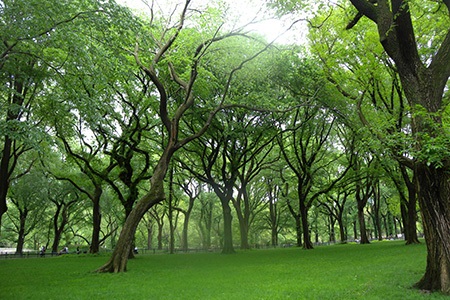
The American Elm (Ulmus americana) is probably the most common and famous elm tree found in America. The canopy of this tree is vase-shaped, and it's pretty tall compared to the other elm trees. This tree's size and canopy type allows it to provide a ton of shade.
In the last few years, the number of American Elm trees has significantly decreased due to the Dutch Elm Disease, also known as DED. However, this tree is being revived by horticulturists. They have devised a plan to create an upgraded form of this plant.
The upgraded plant is much more robust than the bare American elm tree. This version can not only withstand the Dutch Elm Disease, but it's more resistant to regular diseases as well.
Cedar Elm Tree
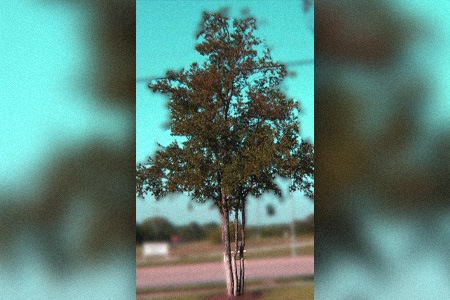
The Cedar elm (Ulmus crassifolia) is one of the best urban plants belonging to the Ulmus genus. They are highly resistant to pollution, and this is one of the significant factors that helps these trees survive urban areas without any problem.
Furthermore, Cedar elms grow equally well on poor soil and aren't affected by droughts. Despite their names, the Cedar elm trees aren't related to the cedar trees in any way. In fact, even their wood doesn't resemble the cedar tree.
These types of elm trees have named the Cedar elm tree due to their tendency to grow near junipers, also types of cedar trees, from time to time.
Although the Cedar Elm isn't found abundantly across America, it's the most common type of elm tree in Texas. These trees aren't as vulnerable to Dutch elm disease, but they can suffer and die from this disease. To grow like a healthy plant, these trees require full sun exposure.
If they're provided adequate conditions of growing, they can grow up to 50-70 feet. Yet, they have the smallest leaves amongst all the elm tree varieties.
Cherry Bark Elm Tree
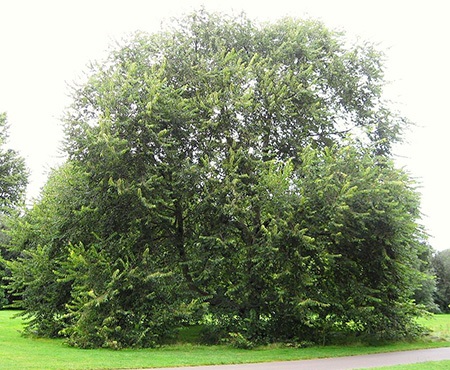
Often called a Marn tree (Ulmus villosa), this elm tree species is among the Asiatic elms, growing in the Himalayas in India and Pakistan. It's a deciduous tree meaning it will lose its leaves every year.
Though not to the same degree, you want to watch these trees like you would an American Elm, both of which are susceptible to Dutch Elm Disease (DED). Great Britain had many of these trees but they were destroyed by DED when it was spread from tree to tree by the elm bark beetle.
Give these elm varieties plenty of sun with well-draining soil and you'll find they'll grow up to 82 feet in height. Their oblong leaves grow in tight clusters and will produce flowers at the right time. The bark is smooth and the sparse branches will hang and dangle.
Chinese Elm Tree
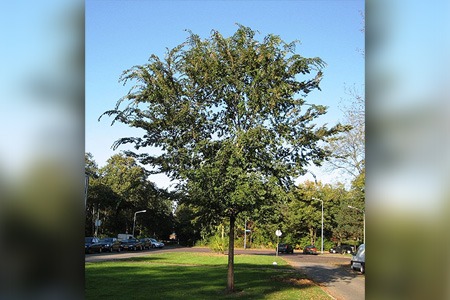
Next up, we have Chinese elm (Ulmus parvifolia). What makes these stand out from the rest of the elm tree types is their leaves. Unlike regular elm leaves, these are rounded. Then again, they have exfoliating barks that come in different colors.
These trees can be found in shades of orange, black, green, grey, and brown. Yet, what makes these trees truly special is their capability of adapting to any type of soil. These require moist soil, but the soil must be well-drained for the best results.
Chinese types of elm trees are often used for creating Bonsai. This is because these trees can grow without any hindrance, even if they're pruned. When you spot a Chinese elm tree, see if you notice any of the Chinese types of aspen trees in your environment, too.
As they are capable of adapting to most soil types and can resist the Dutch elm disease very well, they are considered as a substitute for American elm. These trees are being planted in a lot of areas in America. Plus, they offer the same vase-shaped canopy.
English Elm Tree
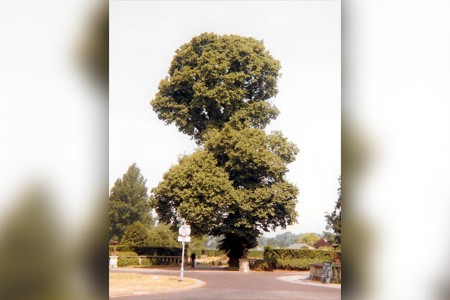
The English Elm (Ulmus procera & Ulmus minor 'Atinia') is mostly found around western and eastern Europe as well as Britain. These huge trees can grow up to a staggering 130 feet. What makes these amazing is their super-fast growth rate.
These varieties of elm trees can grow up to 3 feet per year. Plus, they are one of the tallest among elm tree types. Not only that, but they are one of the widest as well. A fully-grown English elm tree can stretch up to 50 feet.
Unlike most other elm trees, these reproduce with suckers instead of seeds. They were found in abundance once, but their numbers quickly decreased after the Dutch elm disease struck. Few types of termites would even eat a nasty diseased tree.
These trees can survive urban areas very easily, as they're tolerant of pollution. However, their barks aren't that strong, so they don't look that pretty up close. This is why these aren't used as landscape trees.
Camperdown Elm Tree
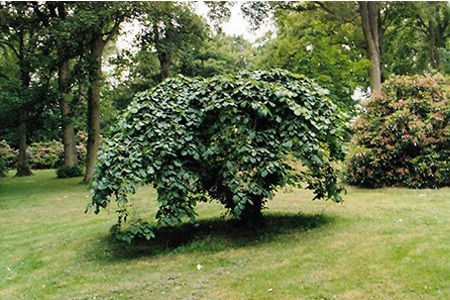
The Camperdown elm tree (Ulmus glabra 'Camperdownii') is known by many names other than just this. Some call it the weeping elm, while many call it the umbrella elm. These elm tree types are essentially a sub-species of the Wych elm tree. Specifically, it's a weeping variety.
This tree is abundantly used in many areas around the United Kingdom for adding foliage. The twisted branch of this tree creates a dense mesh of greenery that can enhance the sight of the landscape.
Slippery Elm Tree
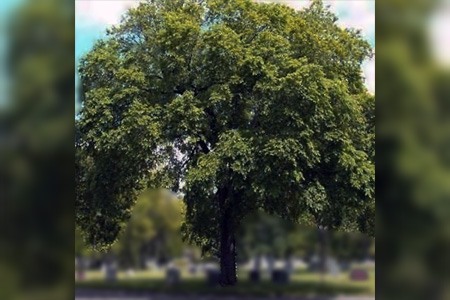
The Slippery elm (Ulmus rubra), also known as the Red elm, is one of the lesser-known types of elm trees. These elm trees are found mostly in Ontario and on the eastern sides of the United States. Needless to say, these trees can't be grown everywhere.
These trees are special because they contain a type of mucilage within their inner bark. This offers a lot of medicinal benefits. It can be used as a medicine for coughs, sore throat, constipation, diarrhea, and different types of infections.
Due to the presence of the mucilage, these are known as the "Slippery Elm." Despite being so beneficial, it's very tough to come across a slippery elm that has reached maturity. It's because these are vulnerable to many diseases, and that includes the Dutch elm disease. If you're going to work with these, make sure you know how to save a dying tree to keep it in top notch health.
Several pieces of evidence have proven that native Americans used the mucilage from Slippery elms as medicines. The leaves of these are very rough to touch, and they form a high canopy once they mature.
European White Elm Tree
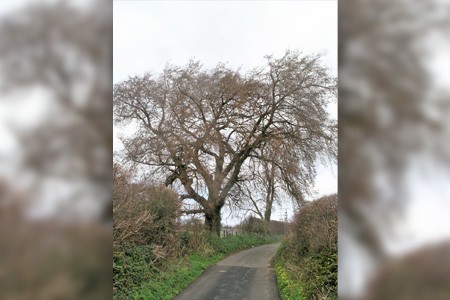
The European White Elm Tree (Ulmus laevis Pall.) are predominantly found in European areas. Although it's found all across Europe, they tend to grow more around riverbanks and floodplains. Other than the European White elm, they are known as the spreading elm or the fluttering elm.
The crown of these trees may either be round or oval, but they are mostly oval. These deciduous trees are fast-growing, but they don't grow that tall. They grow up to 30-35m, which is very low compared to many other trees from the same genus.
European White elm species produce dark and glossy leaves. Plus, between March and April, they produce red flowers that stay in clusters. They also bear grey-green colored fruits.
The White elm tree types are seen to grow mostly in moist and fertile soils. They require an abundance of airflow for proper growth, and they can withstand both short and long floods.
David Elm Tree
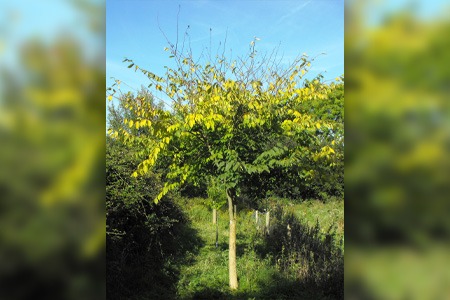
The David elm (Ulmus davidiana), also known as the Father David elm tree, is one of the smaller elm trees that we've come across. This species is native to China. However, it can be found in abundance across various Asian regions, for example, Siberia, Korea, and Mongolia.
One of the main reasons the David elm tree is so famous in America is its similarity with the American Elm. If you look at the premature plants of each type, it'll be tough for you to spot any difference.
What makes the David Elm different from the American elm is its smaller size. The trunk of these types of elm trees are slimmer compared to that of the American elm. Plus, it can grow up to 50 feet only.
A major reason why David Elm trees can't be seen commonly in America is because of their compatibility. These trees have a hard time growing in places that are far from their native region.
Rock Elm Tree
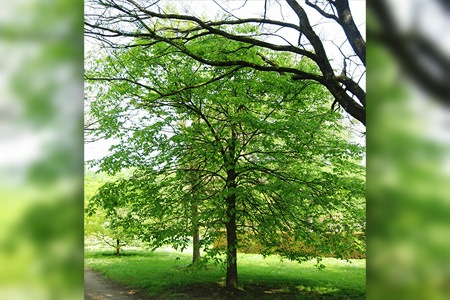
The Rock Elm tree (Ulmus thomasii) is found around the Midwestern areas of the United States, and these have been named after David Thomas, who was an American Civil engineer.
These elm tree types are also known as the cork elm tree. One of the unique things about this tree is its leaves.
The leaves are quite leathery, and there aren't many other elm trees that sprout leaves of this texture. While the upper part of these leaves is shiny and smooth, the lower parts are quite hairy.
Siberian Elm Tree
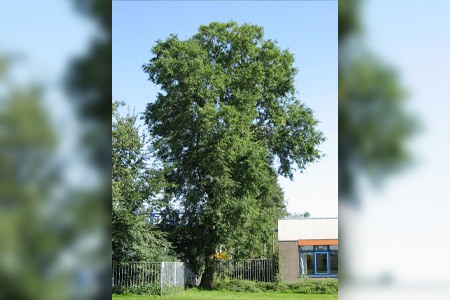
Last but not least, we have the Siberian (Ulmus pumila) or the dwarf elm. These elm trees are one of the most invasive types of elm trees. They can grow almost anywhere, and they spread at a rapid rate as well.
These can grow up to 20 meters tall and live up to 150 years. They have oval-shaped fruits and reproduce through wind pollination.
Wych Elm Tree
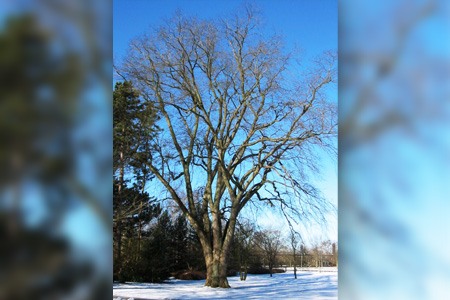
The Wych Elm Tree (Ulmus glabra) is sometimes referred to as the Scotch elm tree. It's an Englism elm cultivar and is recognized by its shape which resembles that of an umbrella. It can grow up to 130 feet in height and spread its branches and leaves up to 60 feet.
It has a smooth gray bark while growing but upon maturation will develop fissures in the bark. It grows shorter branches that tend to the thicker side that develop winged samaras that are fun to play with. The serrated, yellow-to-green foliage will turn yellow in autumn.
Winged Elm Tree
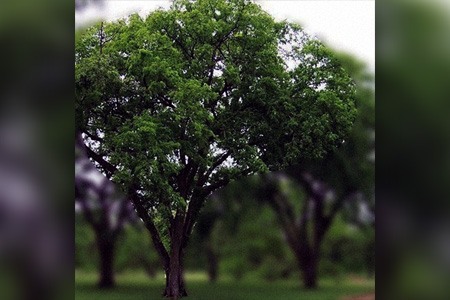
The winged elm tree (Ulmus alata) receives its name from the unique growths along the entire length of the branches. These growths are thin but look like warts and look more like knots than wings, which makes the name that much stranger.
This elm tree species needs plenty of sunlight to support the leafy branches that form a dense crown around the top. The leaves are shaped like ovals with jagged, serrated edges. The tops will be a light-to-medium green while the bottoms will be paler and feature a fuzzy hair to them.
During the summer the leaves will tend towards a yellow color. Before the leaves appear each year the branches will produce burgundy flowers that are a sight to behold.
Dutch Elm Tree
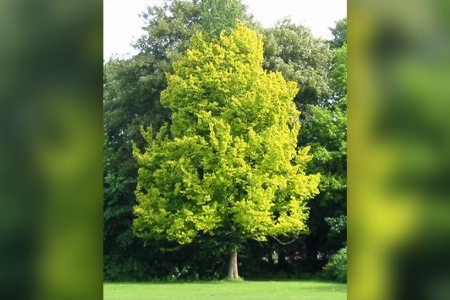
The Dutch Elm Tree (Ulmus hollandica) is a hybrid between the field elm and the Wych elm (above). This hybridization occurred naturally. The result is a tree with egg-shaped leaves that feature a longer tip with serrated edges. These leaves have short stalks and are a yellow-green color.
The bark on this tree begins smooth and matures with deep fissures while retaining its darker gray color that can even tend towards black. These elm varieties will produce plenty of samaras with broad wings that start off as brown, hairy bulbs that become red-to-brown colored twigs.
Types of Elm Trees to Grow the Perfect Look
These were the most exciting types of elm trees that you can find right now. Next time you want to determine whether a tree belongs to the Ulmus genus or not, take a good look at its leaves. These usually have toothed and rough leaves, so they are easy to spot.



